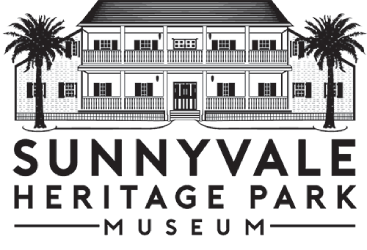If a group of people were asked to name a city with a unique mixture of historic architectural styles, chances are good that Sunnyvale would not be one of the cities named. After all, no “grand palaces” or mansions sit within its borders. But if the group were to dig a little deeper, as the newsletter team has done, they would discover a wide variety of architectural styles reflecting the history of the 20th century, and earlier, on full display right here in Sunnyvale! Bungalows from the 1920s, World War II Victory Village cottages, 1950s Eichler homes, and ranch-style tract homes of the 1960s-1980s are but a few of the architectural styles to be observed. Pre-20th century homes include a Queen Anne cottage dating back to the 1890s, and Sunnyvale’s oldest home, the two story, side-gabled farmhouse known as the Wright House which dates from 1862. (See pages 4, 5 of this newsletter for the history of the Wright House).
Homes are not the only architectural highlights in Sunnyvale. The buildings along the 100 block of South Murphy Avenue, constructed between 1900 and 1940, comprised Sunnyvale’s first business district and operate today as modern establishments, thanks to downtown preservationists Ann Hines and Alillion Wilhelmy. The building that housed Seijo’s Depot Bakery, so named because it was less than a block from the train station, is now occupied by Leigh’s Favorite Books. Fewings Department Store, later Kirkish Western Wear at the corner of Murphy and Washington avenues, is currently home to Dishdash Restaurant, Wilson’s Salon, and the Bean Scene Coffee Shop. Several Sunnyvale churches, as well as Fremont High School, also boast unique architectural styles.
The museum newsletters of 2021 will bring the architectural history of Sunnyvale into focus by featuring buildings of particular interest in each issue. By the end of the year, we hope our readers will have gained greater knowledge and appreciation for the unusual and varied architectural styles (and their stories) to be found in Sunnyvale.

